Houndstooth
Houndstooth, hounds tooth check or hound's tooth (and similar spellings), also known as dogstooth, dogtooth, dog's tooth, or pied-de-poule, is a duotone textile pattern characterized by broken checks or abstract four-pointed shapes, often in black and white, although other colours are used. The classic houndstooth pattern is an example of a tessellation.
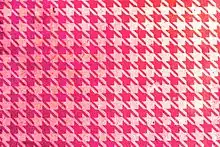
A smaller-scale version of the pattern can be referred to as puppytooth.[1]
Design and history
The oldest known occurrence of houndstooth is the Gerum Cloak,[2] a garment uncovered in a Swedish peat bog, dated to between 360 and 100 BC.[3] Contemporary houndstooth checks may have originated as a pattern in woven tweed cloth from the Scottish Lowlands,[4] but are now used in many other woven fabric aside from wool. The traditional houndstooth check is made with alternating bands of four dark and four light threads in both warp and weft/filling woven in a simple 2:2 twill, two over/two under the warp, advancing one thread each pass. In an early reference to houndstooth, De Pinna, a New York City–based men's and women's high-end clothier founded in 1885, included houndstooth checks along with gun club checks and Scotch plaids as part of its 1933 spring men's suits collection.[5] The actual term houndstooth for the pattern is not recorded before 1936.[6]
Oversized houndstooth patterns were also employed prominently at Alexander McQueen's Fall 2009 Collection, entitled Horn of Plenty.[7] The patterns were a reference to Christian Dior's signature tweed suits.[8]
Houndstooth patterns, especially black-and-white houndstooth, have long been associated regionally with the University of Alabama. This is because the longtime UA football coach Paul "Bear" Bryant often (though not exclusively) wore black-and-white houndstooth fedoras.[9] The university has attempted to assert a trademark for houndstooth, especially when used in conjunction with other symbols of the school and its football team, a legal strategy that has been largely unsuccessful.[10][11]
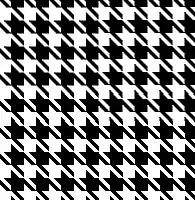 Houndstooth pattern
Houndstooth pattern.jpg.webp) A colored oversized houndstooth dress
A colored oversized houndstooth dress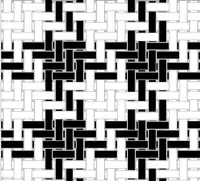 Weaving a small-scale houndstooth check in a 2:2 twill
Weaving a small-scale houndstooth check in a 2:2 twill.jpg.webp) A car interior with houndstooth pattern upholstery
A car interior with houndstooth pattern upholstery A single element of the pattern
A single element of the pattern
See also
References
- "Style hints & tips, everything a gentlemen needs to know about style - Charles Tyrwhitt". www.ctshirts.co.uk.
- "Gerumsmanteln-Färganalys - Historiska Museet". historiska.se.
- "Sveriges äldsta bevarade klädesplagg - Historiska Museet". historiska.se.
- Dunbar, John Telfer: The Costume of Scotland, London: Batsford, 1984, ISBN 0-7134-2534-2, 1984 (paperback 1989, ISBN 0-7134-2535-0)
- "Gun Club Checks". The New Yorker. New Yorker Magazine, Inc. 9: 28. 1933. OCLC 1760231. Retrieved October 9, 2011.
- "Houndstooth". Dictionary. Merriam-Webster. Retrieved 3 September 2019.
- Eric Wilson (11 March 2009). "McQueen Leaves Fashion in Ruins". New York Times. Retrieved 2 November 2015.
- Sarah Mower (10 March 2009). "Fall 2009 Ready-to-Wear Alexander McQueen". Vogue. Retrieved 2 November 2015.
The clothes were, for the most part, high-drama satires of twentieth-century landmark fashion: parodies of Christian Dior houndstooth New Look and Chanel tweed suits [...]
- University of Alabama Supply Store. "Houndstooth, the Bear, and the University of Alabama". University Supply Store. Retrieved January 7, 2021.
- Jon Solomon (November 13, 2013). "Who has a right to use houndstooth? University of Alabama fights, even without a trademark". Alabama Media Group. Retrieved November 12, 2020.
- Kent Faulk (March 9, 2016). "Trademark board tosses Alabama houndstooth opinion but fight may continue". Alabama Media Group. Retrieved November 12, 2020.
External links
| Wikimedia Commons has media related to Houndstooth. |
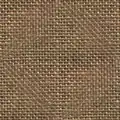
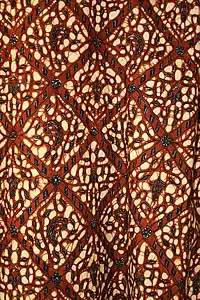
.svg.png.webp)